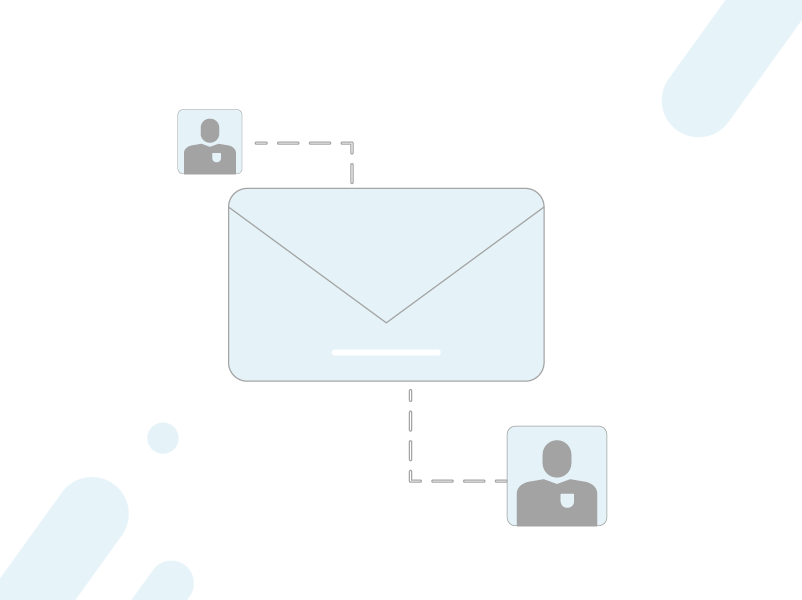For any business, meeting customer expectations is mission critical. And in an era where communication flows through multiple channels, companies must decide whether to adapt or fall behind. In this context, the concept of “multi-channel messaging” in customer service arises, which refers to the ability of a company to interact and communicate with customers through different communication channels, such as email, telephone, online chat, etc. live, social networks and instant messaging.
The main idea is to provide a seamless and consistent experience to customers, regardless of the channel they choose to interact with the business. This implies effective integration of the different communication channels and the ability to maintain the context of the conversation as customers switch from one channel to another.
Key 1: The importance of multichannel messaging in customer service
Today, multichannel messaging is essential to the success of a business for several reasons:
1. Customer Satisfaction
Customers expect to be able to communicate with businesses through their preferred channels. Multi-channel messaging allows companies to meet these expectations, which in turn increases customer satisfaction.
2. Greater accessibility
By offering multiple communication channels, a business becomes more accessible to a diverse audience. Not all customers want or can communicate in the same way. By providing options, you can reach a larger audience.
3. Agility in response
Multi-channel messaging enables faster responses to customer questions and issues. Real-time conversations via live chat or instant messages can resolve issues instantly, which also improves the customer experience.
4. Increased customer retention
When customers feel like they can easily communicate with a business and receive quick and helpful responses, they’re more likely to remain loyal. This leads to higher customer retention and ultimately an increase in revenue in the long run.
5. Collection of significant data
By using multiple channels, it is possible to collect a lot of valuable data about customers and their preferences. This allows you to customize marketing and customer service strategies more effective
6. Improved operational efficiency
By using the right management tools and systems, companies can centralize all customer interactions on a single platform. This allows for better organization and tracking of conversations, which in turn improves the productivity and efficiency of the customer service team. The integration of chatbots and automation systems can also help reduce the workload of support teams when handling common and repetitive queries. This frees up time to solve more complex problems.

Key 2: Strategies to implement a successful multichannel message
Implementing a successful multi-channel message in customer service requires proper planning and strategy. Here are some key strategies to help businesses successfully embrace multi-channel messaging:
1. Know the Clients and identify the most relevant channels
Before implementing a multi-channel strategy, it is essential to understand the preferences and needs of customers, by collecting data on the communication channels most used by customers and their expectations in terms of response time and quality of service. This information will help you make informed decisions about which channels to prioritize and how to configure them to provide the best customer experience.
2. Integrate communication channels
Effective integration of communication channels is key to delivering a seamless and consistent customer experience. Using tools and systems that allow you to centralize all customer interactions on a single platform will make it easier to track conversations, assign tasks, and efficiently manage customer inquiries.
3. Train the Customer Service team
A trained customer service team is critical to providing quality service across all channels. Additionally, clear guidelines should be provided on tone of voice and how to interact with customers on each channel.
4. Use of advanced technology
Technology plays a vital role in the successful implementation of multi-channel messaging in customer service. The use of advanced tools and software (CRM) that allow efficient management of communication channels, automate responses and offer a personalized service. Also, consider implementing chatbots and virtual assistants to help manage the volume of inquiries and provide quick answers to frequently asked questions.
Here are three CRM alternatives currently on the market that are known for being user friendly:
- Salesforce: Offers tools for managing contacts, sales, customer service, and marketing. You can automate business processes, personalize customer interaction, and analyze data to improve customer relationships.
- HubSpot CRM: It is a free option that allows you to manage contacts, track interactions and automate sales and marketing tasks. It also includes customization and automation tools to improve customer relationships.
- Zoho CRM: It also allows you to personalize the customer experience and automate repetitive tasks.

Key 3: Main channels for a multichannel messaging strategy
Knowing the wide range of existing channels is key when choosing which are the most relevant channels for each business and its multichannel messaging strategy in customer service:
Live Chat on the Website:
It allows website visitors to interact directly with customer support agents in real time.
Ideal for answering quick questions and providing instant assistance.
Email:
It offers a more formal way of communication for more complex questions and problems.
Allows you to provide detailed answers and attached documents.
Social networks:
Platforms like Facebook, Twitter, Instagram, and LinkedIn can be used to interact with customers.
It allows you to respond to public inquiries and demonstrate customer service in a social environment.
Instant messaging:
Apps like WhatsApp, Facebook Messenger, and Telegram are popular channels for informal interactions.
Suitable for quick queries and direct answers.
Phone:
Although it is not technologically new, it is still a valuable option for personalized attention.
Allows customers to speak directly with agents for more complex inquiries.
Chatbots and Virtual Assistants:
Automation of basic responses and common tasks.
It is available 24 hours a day and can help lighten the load on the customer support team.
Forums and Online Communities:
Platforms where customers can ask questions and share experiences.
Customers themselves can provide answers and solutions.
SMS:
Sending text messages for short and direct communications.
It can be useful for notifications and reminders.
Videoconference:
For situations that require live demos, complex troubleshooting, or one-on-one attention.
It provides a closer connection than text or voice.
Contact Forms on the Website:
Customers can fill out forms online to ask questions or request assistance.
It provides a structured way to collect relevant information.
Comments and Reviews Platforms:
It allows you to respond to comments and customer reviews on platforms such as Yelp, Google My Business, etc.
Show customer service even after a purchase.
Chats on Electronic Commerce Platforms:
If you have an online store, you can offer the option to chat during the checkout process.
Help customers solve questions about products and payments.
Augmented Reality (AR) and Virtual Reality (VR):
In industries like fashion, beauty, or interior design, these technologies can allow customers to try products or experience spaces before they buy.
We have to remember that not all companies will need to use all of these channels. The choice should be based on the preferences of the audience and the ability of the teams to manage them effectively.

Examples of implementation that have improved customer service:
Live Chat on the Website:
Example: An online fashion store implements a live chat on its website. Visitors can ask questions about sizes, colors, and styles, and get immediate answers. This simulates the experience of buying in a physical store with personalized assistance.
Success Stories: Shopify, an e-commerce platform, uses live chat on its website to help entrepreneurs set up and run their online stores. This has allowed users to solve technical problems and receive guidance in real time.
Integration of Social Networks:
Example: A telecommunications company integrates its Twitter account with its customer service system. Customers can send a public or private message via Twitter with their queries and technical issues, and the customer support team responds quickly and efficiently.
Cases of Successful Companies: Nike uses its profiles on social networks to interact with its followers and customers. When a customer shares a positive experience with a Nike product, the company responds with thanks and appreciation.
Attention through Instant Messaging:
Example: A travel agency offers assistance through instant messaging applications such as WhatsApp. Travelers can send messages to get flight confirmations, itinerary changes and reservation details.
Success Stories: Domino’s Pizza allows customers to place orders and track their deliveries through instant messaging applications such as Facebook Messenger. This has simplified the ordering and tracking process for customers.
How Uniboxi can improve multi-channel messaging with customers
Uniboxi is the tool that allows companies to implement multichannel messaging to improve communication with customers and potential customers, through a centralized platform that integrates various communication channels, such as WhatsApp, Facebook Messenger, and Instagram.
From this, Uniboxi can help companies:
- Offering a more personalized and flexible customer service experience: Allows companies to communicate with their customers through the channels that are most comfortable for them. This can help companies build closer relationships with their customers and provide a more personalized service.
- Improving Customer Service Efficiency: Uniboxi offers a number of automation features that can help companies reduce customer service costs. This can free up employees to focus on more complex and strategic tasks.
- Improving customer satisfaction: Customers who receive personalized and flexible customer service are more likely to be satisfied with their experience. This can lead to increased customer loyalty and repeat business.
All of the above is possible thanks to the various functions of Uniboxi, which can help companies improve their customer service.
- Centralization of Communication: Uniboxi allows you to centralize all interactions with customers in a single interface. This makes it easy to manage and track conversations, as all communications are recorded and stored in one place.
- Intelligent Automation: Uniboxi can include intelligent automation features, such as automatic responses and automatic query routing. This streamlines the customer support process and ensures inquiries are routed to the right team.
- Analysis and Reports: The platform provides detailed metrics and analysis on the performance of the customer service team. This allows you to assess the efficiency of operations and make informed improvements.
- Personalization: Uniboxi offers personalization options to tailor responses and interactions to individual customer needs, contributing to a more personalized experience.
- Interaction History: Every customer interaction is logged and stored in the system, allowing agents to access history and provide more contextualized service.
- Opportunity Tracking: Uniboxi can help track sales leads and follow up clients, which is crucial for the marketing and sales team.
In summary, Uniboxi is a tool that offers multichannel messaging solutions to improve communication with customers and potential customers. By centralizing interactions, automating certain processes, and providing detailed analytics, Uniboxi can contribute to more effective communication and a better customer experience.

